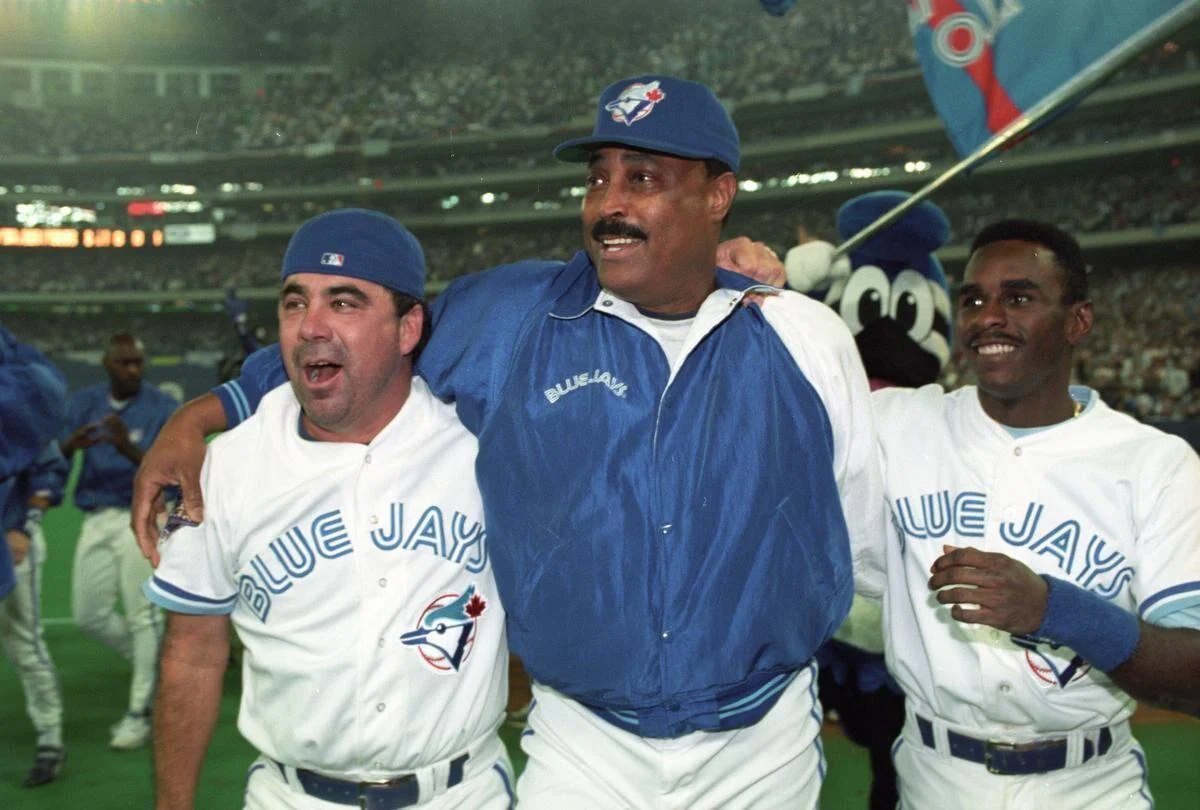Blue Jays Flashback: Shawn Green
Shawn Green isn’t a name mentioned in Toronto when it comes to the GOAT Blue Jays players. Kevin Glew argues that it’s time for that to change.

He was the Toronto Blue Jays’ first 30-30 player and he still holds franchise records for longest hitting streak and runs in a season.
And his left-handed swing was so smooth that Blue Jays coach Mel Queen once threatened to fire anyone who messed with it.
Yet for some reason, Shawn Green is rarely mentioned as one of the greatest players in Blue Jays’ history.
Maybe it was because his tenure as a full-time outfielder in Toronto was short and the Blue Jays teams he starred on never advanced to the postseason. And his abrupt departure after his Silver Slugger Award-winning 1999 season left a sour taste in some fans’ mouths.
Whatever the reason is, there’s no question Green was one of the best five-tool players ever to wear a Blue Jays’ uniform.
Born in Des Plaines, Ill., in 1972, Green eventually settled in Tustin, Calif., where he excelled with his high school baseball team, batting .479 in his senior season. It was enough to convince the Blue Jays to select him in the first round of the 1991 MLB draft. Green was offered a scholarship from Stanford but he turned it down when the Blue Jays dangled a $725,000 signing bonus at him.
In his first two seasons in the Blue Jays’ system, Green showed promise, starting with High-A Dunedin in 1992 and Double-A Knoxville in 1993. That same year, he got his first taste of the big leagues with the Blue Jays, going 0-for-6 in three games in September.
In 1994, the sweet-swinging outfielder was assigned to Triple-A Syracuse where he topped the International League with a .344 batting average and was named team MVP.

The ensuing year, he cracked the big-league club out of spring training, but manager Cito Gaston insisted on platooning him in right field with veterans Candy Maldonado and Mike Huff. Playing almost exclusively against right-handers, Green batted .288 with 15 home runs in 121 games and led the team with a .509 slugging percentage.
Over the next two seasons, Green hit .280 and .287 respectively, but he grew frustrated being platooned in right field. And to Mel Queen’s chagrin, Gaston and the club’s hitting coach Willie Upshaw also wanted Green to alter his swing so he could pull the ball more.

After Gaston was fired, Tim Johnson took over as skipper and told Green he was going to be the club’s everyday right fielder. With this vote of confidence, Green enjoyed a breakout season, belting 35 home runs and stealing 35 bases to become the first 30-30 player in franchise history. He also drove in 100 runs and scored 106.
The left-handed hitting slugger was even better in 1999 when he batted .309 with 42 home runs, 123 RBIs and 20 stolen bases. He also put together a franchise record 28-game hitting streak. For his efforts, he was selected to his first All-Star Game, captured a Silver Slugger Award and won a Gold Glove Award.
Eligible for free agency following the 2000 season, Green was offered a five-year, $48-million contract by the Blue Jays. General manager Gord Ash told the media that if Green didn’t sign, he would trade the outfielder.
It seemed like an ultimatum. On top of this negotiating tactic, Green was disappointed that the Blue Jays had dismissed coaches Queen, Jim Lett and Gary Matthews at the end of the season. The club had also announced that Gaston would be returning as a hitting coach. Green also longed to be closer to his California home. So, with all of this in mind, he informed Ash that he was not interested in signing a long-term deal.
Ash then quickly dealt Green to the Los Angeles Dodgers in a four-player deal that saw the Blue Jays land Raul Mondesi. Green promptly signed a six-year, $84-million contract with the Dodgers.
“As much as I loved my teammates and the fans in Toronto, it was time to move on,” Green wrote in his 2011 book, The Way of Baseball. “At 26, I didn’t want to commit the prime of my career to a team that didn’t seem capable of spending the money to acquire the talent necessary to win in the ferocious American League East. I was also ready to try my hand in a larger market.”
In his first year with the Dodgers, Green struggled, batting .269 with 24 home runs, but he rebounded to belt a franchise record 49 home runs in 2001.
On May 23, 2002, against the Milwaukee Brewers, Green made major league history, becoming the 14th big leaguer to sock four home runs in a game. He also had a single and a double for 19 total bases – a single-game record that still stands today.
Green completed that season with 42 home runs and 114 RBIs and finished fifth in the National League MVP voting. He had two more solid seasons with the Dodgers before he completed his big-league career with stints with the Arizona Diamondbacks and New York Mets.
With two young daughters at home, Green opted to retire at the age of 34. He completed his career with a .283 batting average, 2,003 hits – including 328 home runs – and 1,070 RBIs.
In recent years, he has served as a guest instructor at Dodgers spring training but he spends the bulk of his time running his tech company called Greenfly.
Most Blue Jays fans wouldn’t know what Green is up to these days. And that’s a shame. Because when you consider the team records he holds and the fact that he ranks sixth in franchise history in slugging percentage (.505) and eighth in OPS (.849), Green should be fondly recalled as one of the best five-tool players in Blue Jays’ history.
JOIN BODOG TODAY!